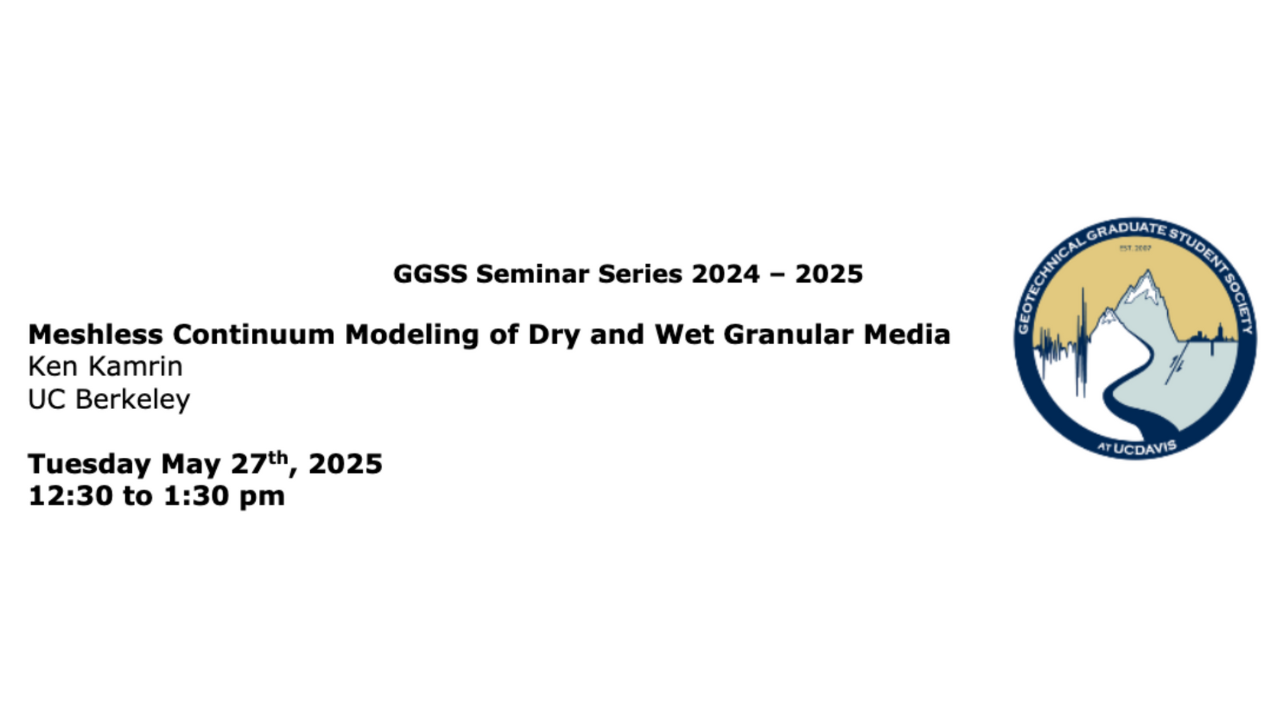
Event Date
Granular flows, despite their ubiquity, have been historically resistant to modeling. While grain-by-grain discrete element methods (DEM) exist, these are often far too costly at the length-scales of full-size industrial or geotechnical problems. This talk progressively develops continuum-based tools with the aim of realistic but computationally tractable full-scale flow simulation. We begin by providing a brief discussion on dry granular rheology including what sorts of problems can be solved accurately with a basic granular "trans-phase" model; such models attempt to span the solid-like, liquid-like, and gas-like granular responses. We then discuss a meshless numerical method, the Material Point Method (MPM), which can be used to simulate such models up to huge deformations. Next, we do a deeper dive on how the MPM-based approach can be extended to model submerged granular flow problems using two-phase mixture theory, where the fluid and granular phases are modeled as two separate but coupled continua. This methodology is shown able to replicate experimental results for saturated granular flows over a range of conditions and packing fractions, and can be extended to account for more obscure effects, such as those giving rise to shear-thickening suspensions.
